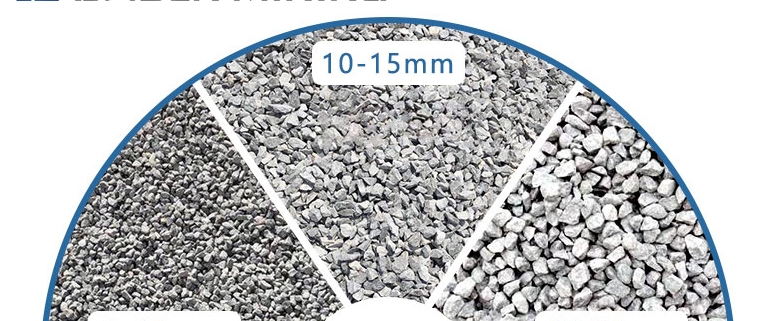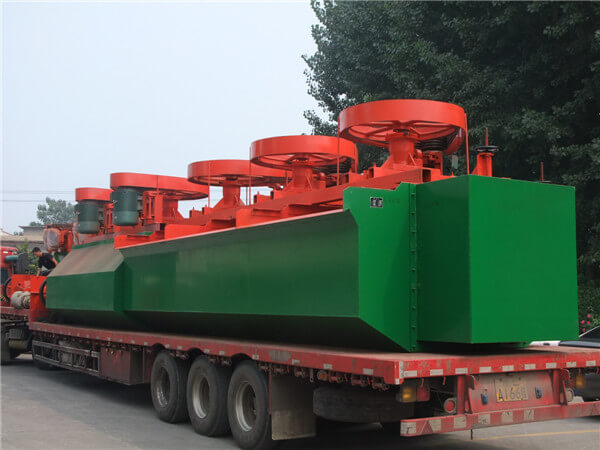The process of flotation is affected by a number of factors
Many factors affect flotation, including grinding fineness, pulp concentration, flotation time, reagent system, pulp temperature, flotation process, water quality, and flotation equipment type.
Flotation fineness requirements (flotation particle size)
In the flotation process, the flotation particle size is closely related to the sorting index. The adhesion of ore particles and air bubbles is the basic behavior in the flotation process, and the firmness of the adhesion between ore particles and air bubbles directly affects the quality of flotation indicators. The firmness of the mineral particles attached to the air bubbles is not only related to the hydrophobicity of the mineral particles themselves, but also related to the size of the mineral particles. Generally speaking, if the ore particles are small (except those smaller than 5-10 microns), they will attach to the air bubbles faster and more firmly; otherwise, if the particle size is coarser, they will attach to the air bubbles slowly and not firmly. Let’s analyze the stress on the mineral particles attached to the air bubbles.
The adhesion of mineral particles on air bubbles is affected by the following three forces.
1. The force F1 is the gravity of the mineral particles in the water, and the direction is downward, which is the force that makes the mineral particles break out of the air bubbles. It is equal to the weight W = D3δg of the mineral particles in the air minus the buoyancy f = D3δg in the water, namely:
f1 = W Cf = D3δg-D3δg = D3(δ-δ)g
In the formula, d – ore particle diameter;
δ – density of ore particles;
δ – Density of water.
It can be seen from the above formula that the force F1 is proportional to the cube of the particle size (d). The larger the ore particles, the greater the force to separate them from the air bubbles.
2. The force F2 is the surface tension of the mineral particles attached to the air bubbles, specifically, it is the vertical component of the surface tension acting on the three-phase wetting periphery. Its direction is upwards, which makes the mineral particles attach to the air bubbles. The magnitude of this force is F2 = 2πrσgas-liquid sinθ.
where r – is the radius of the attachment surface;
σ Surface tension of gas-liquid-gas-liquid interface;
θ – contact angle (degrees).
It can be seen from the above formula that the adhesion force F2 of mineral particles on air bubbles is related to the contact angle θ of mineral particles. Mineral particles with a large contact angle, that is, hydrophobic mineral particles, have a large adhesion force F2 to air bubbles.
3. Force F3 is the pressure of the molecules in the gas bubbles on the surface to which the mineral particles adhere. This force is the force that makes the mineral particles break away from the air bubbles, so its direction is to throw downwards. Its size is:
F3 =πr22σgas-liquid/R
where r – bubble radius.
It can be seen from the above formula that the pressure F3 is smaller when the bubble is large (R is large).
When the three forces F 1, F2, and F3 are in a balanced state, that is, when the mineral particles are attached to the air bubbles and are close to falling off, then F2 = F1+F3.
The contact angle can be related to surface tension, particle size (particle weight), adhesion radius, and bubble radius when particles and bubbles are relatively stationary. However, in the actual flotation process, air bubbles and ore particles are in relative motion, and the shedding force between ore particles and air bubbles is much greater than that in the static state.
1. When the ore particles have good buoyancy, that is, minerals with a large contact angle, the flotation particle size can be coarser, of course, there is a certain limit, which is the so-called upper limit of particle size.
2. For the flotation of coarse particles, the larger the bubbles, the more favorable, or in other words, the larger the bubbles, the smaller the contact angle of the floated minerals can be floated. But when the foam is too large, the stability of the foam itself is also poor.
As can be seen from the above analysis, flotation particle size is one of the most important factors affecting flotation performance. The grinding fineness must be reasonable in order to obtain better flotation technical and economic indicators so that useful minerals can be completely separated from each other, and the coarse particles must not be larger than the upper flotation particle size, and the fine particles must not be smaller than 10 microns (or 5 microns). Sulfide minerals are generally 0.2mm x 0.25mm, natural sulfur is 0.5mm x 1.0mm, and coal is relatively coarse, 1mm x 2mm.
For more information kindly click on the link or send us: Whatsapp:+8613319277356, Email:[email protected]


